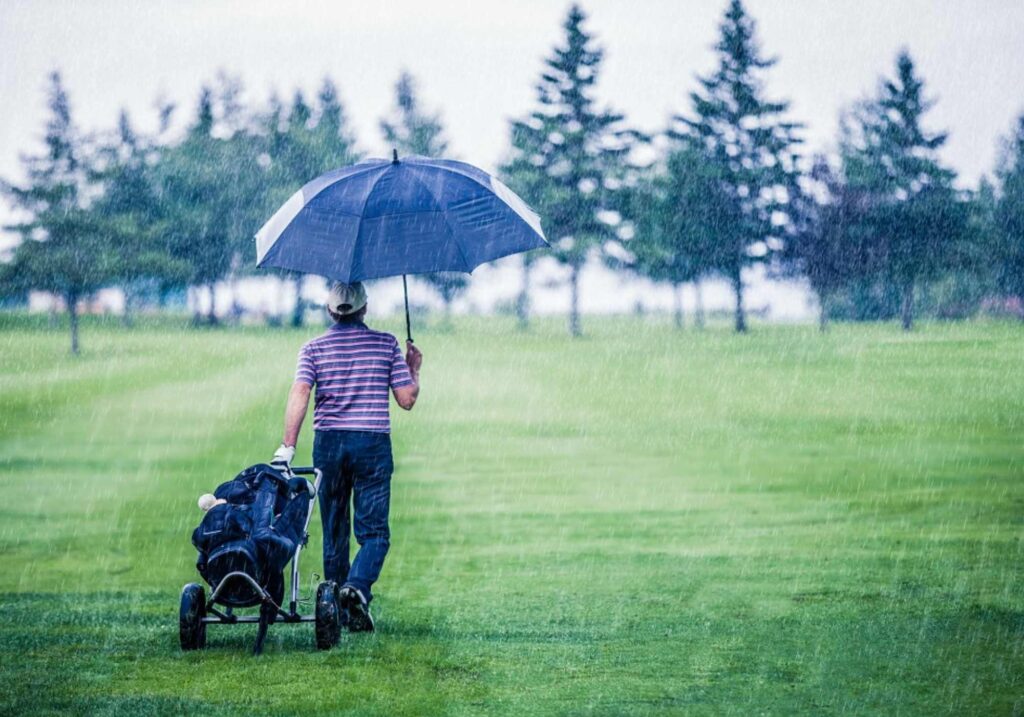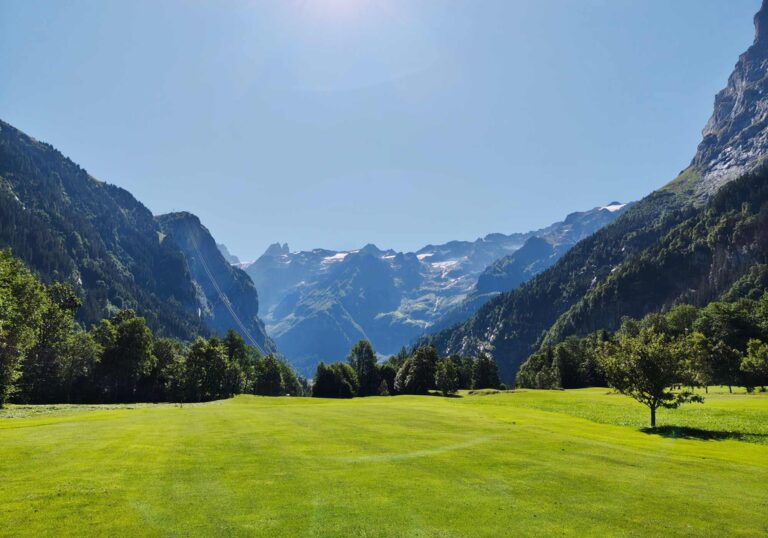Every golfer has had that moment where a shot feels perfect, but it flies farther or shorter than expected. Sometimes it’s not your swing or your club choice. It’s the weather or the elevation changing how the ball travels.
Understanding how these conditions affect ball flight can help you make smarter decisions on the course.
Temperature
Temperature changes the density of the air. Warm air is less dense, which means less resistance on the ball. Cold air is denser, which increases resistance.
A common rule of thumb is that for every 10 degrees Fahrenheit drop in temperature, you can lose about two yards of carry with a driver. That means a ball that flies 250 yards in the summer might only carry 244 yards on a chilly morning.
Tip: In cold weather, take one more club for longer shots and focus on solid contact. In hot weather, you might see your shots go a bit farther than normal.
Elevation
Playing at higher elevation means thinner air. Thinner air creates less drag on the ball, allowing it to fly farther. That’s why players in Denver or other mountain courses often see big distance gains.
The general rule is about a two percent distance increase for every 1,000 feet above sea level. At 5,000 feet, you could see shots carry roughly 10 percent farther. A 150-yard shot at sea level might only require a club you usually hit 135 to 140 yards.
Tip: Adjust your club selection accordingly and practice controlling your distances if you’re playing at elevation for the first time.
Humidity
Humidity makes the air less dense because water vapor is lighter than the nitrogen and oxygen it replaces. This means humid air actually lets the ball fly a bit farther, not shorter as many golfers think. The effect is subtle, often just a yard or two difference, but it can still play a role in fine distance control.
Tip: If the air feels heavy and damp, it may not be slowing your ball as much as you think. Focus more on wind and temperature for bigger adjustments.

Wind
Wind has the biggest and most immediate impact on ball flight. A headwind increases lift and spin, which shortens distance. A tailwind can help shots carry farther but may also reduce spin, making it harder to stop the ball on the green.
Crosswinds affect shot shape, exaggerating fades or draws and making accuracy a bigger challenge.
Tips for playing in the wind:
- Into the wind: Take more club, swing smoother and keep the ball flight lower.
- Downwind: Take less club and be mindful of rollout after landing.
- Crosswind: Aim to allow for drift and match shot shape to the wind if possible.
Rain
Rain impacts ball flight in two ways. First, wet air is often more humid and less dense, which can slightly help carry distance. Second, and more importantly, a wet clubface or golf ball can reduce spin and change launch conditions. This can make shots launch higher with less backspin, especially with wedges.
Tip: Keep equipment dry when possible and expect more rollout on wet greens if the ball is coming in with less spin.
Air pressure
Air pressure changes with weather systems and elevation. Lower pressure, often seen before storms or at high altitude, reduces air density and can help the ball fly a bit farther. Higher pressure increases density and can slightly reduce distance.
While the effect is real, it’s usually less noticeable for casual golfers compared to temperature or wind.
Putting it all together
Imagine you are playing at 3,000 feet on a warm, humid day with a light tailwind. All those factors together will help your ball fly farther. The opposite scenario, a cold, dry day at sea level into a headwind, will make the course play much longer.
Understanding how these conditions interact is part of becoming a more adaptable golfer. The more you notice, the better you can adjust.
Quick adjustment guide
- Cold weather: Add a club for every 10 degrees colder than your normal playing temperature.
- High elevation: Reduce club by about 2 percent carry for every 1,000 feet above sea level.
- Headwind: Add a club or two, swing smooth to control spin.
- Tailwind: Reduce club, but watch for longer rollout.
- Crosswind: Adjust aim to allow for ball drift.
- Humid air: Expect a slight distance boost, but not as much as heat or elevation.
Final thoughts
Weather and elevation are part of the challenge of golf. They can turn a familiar course into a completely different experience from one day to the next. Learning how they affect ball flight helps you adapt quickly, avoid surprises, and make more confident club selections.
Next time you’re on the course, take note of how far your shots are flying compared to normal. You might start to see patterns that make you a better decision-maker under all kinds of conditions.
Let’s hear from you
Have you noticed a big difference in your game when playing at higher elevation or in certain weather? Share your experiences and how you adjust your club selection when the conditions change.
